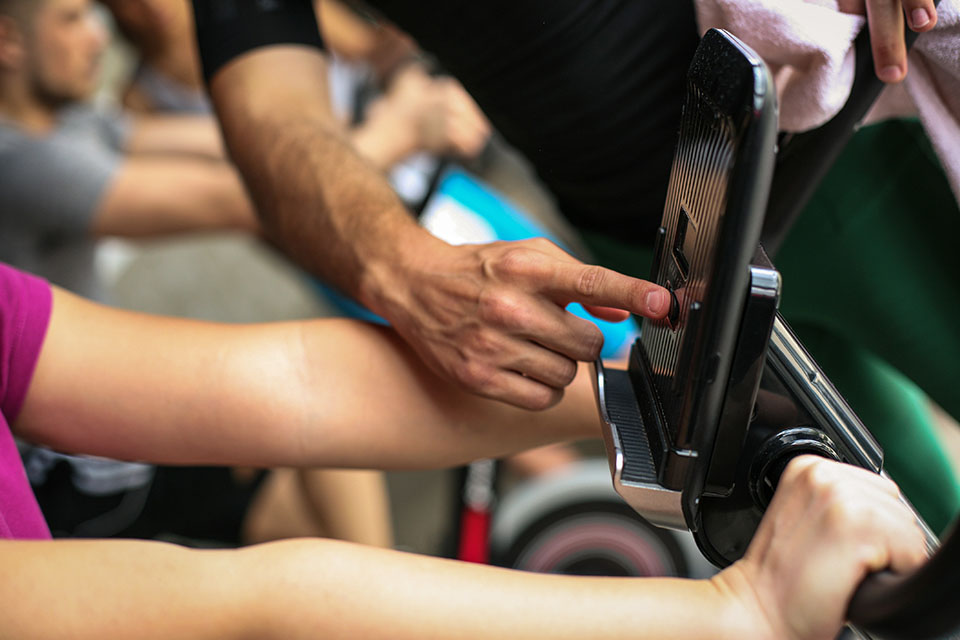Benefits Corner
Benefits Corner this month covers the step-by-step activation process for Identity Guard. There are also articles on the ways to fight cold and flu as well as ways to help control Type 2 diabetes with exercise.

Step-by-Step Activation Process
Get Protected – Once you elect coverage during the enrollment process, you will receive an email communication in January/February from Identity Guard (support@benefits.identityguard.com) with a link to active your coverage.
In order for us to manage and protect your information, we will need some specific information to get your coverage set up. Follow the simple steps below to ensure activation. If you do not complete this enrollment, coverage will not be activated and your identity will not be protected!
1 Verify Eligibility
- Click on the “log in to your account” link in email and land on the “Verify Eligibility” page
- You will be prompted to enter in your date of birth and last name
2 Set up Username and Password and Sign In
3 Finish Your Enrollment
- Click the yellow ‘Finish your Enrollment’ button in the “Account Information” tab to complete enrollment
4 Review and Confirm Election
- Click the “I Agree to Payment Conditions” statement: “The monthly billing amount for the Identity Guard service that have selected will be deducted from your paycheck on or about the same time each month that you continue your membership, unless you cancel your service.”
- Select “Place a Secure Order” to move to next step
5 Social Security Number
- Enter your SSN to enable monitoring and credit features
6 Identity Verification
- Answer questions based on your credit history
7 Establish Identity Guard Account Credentials and Access Your Benefits
- Create your Identity Guard User ID and Password and proceed to access your benefits
To add your Spouse – An email containing a unique activation link for your Spouse’s enrollment will be automatically sent to your email address on file. Forward this email to your Spouse to activate service.
To add your kids – Look for the “Identity Guard for kids” eSpot on the right-hand side of the Identity Guard member homepage. Click on “Add my child” and provide your kids information to activate the monitoring. Coverage includes up to six children under the age of 18.
For any questions, please contact Identity Guard Member Services at 1-888-366-4076
Ways to Fight Cold and Flu

Cough, sniffle, achoo! Cold and flu germs have some crafty ways of getting around. Often these viral villains take to the air. They spread by airborne droplets when someone coughs, sneezes or even talks.
They can also land on surfaces — and hitch a ride when you touch them with your hands.
Germ fighting 101
According to the Centers for Disease Control and Prevention, a yearly flu vaccine for everyone 6 months and older is the single best way to avoid getting influenza. But there’s more you can do. These stay-well strategies can help keep you and your family from getting — or passing along — a cold or flu bug:
- Hit the sink. Be sure to wash your hands regularly to remove any germs. A good, thorough scrubbing is key. Wash for at least 20 seconds with soap and warm water.
- Have sanitizer at the ready. Soap and water aren’t always available. So keep hand sanitizer in your car, your bag or tote, and your workspace too. Look for products that contain at least 60 percent alcohol.
- Be hands-off! Try to limit how much you touch your face. Germs can enter your body through your eyes, nose or mouth.
- Cover that cough. Make it a habit to cough or sneeze into a tissue or the crook of your elbow. Teach kids this trick too.
- Keep your distance. As much as possible, try to avoid close contact with anyone who’s ill. If you do get sick, stay home until you’re better.
- Wipe’em out. Regularly clean surfaces you touch often — such as keyboards, phones, remote controls, door handles and countertops. Use soapy water and a household disinfectant.
- Share not. Remind your family not to share items such as cups, silverware or toothbrushes.
- Build a strong defense. When you take care of yourself, you help your body fight off illness. So be sure to get plenty of sleep. Choose healthy foods — and get regular exercise.*
What to do next
Get the latest information on flu season at flu.gov. You'll find timely updates — plus prevention pointers, flu-care tips and more.
*Talk with your doctor before significantly increasing your activity level. The information provided here is for general informational purposes only and is not intended to be nor should be construed as medical or other advice. Talk to an appropriate health care professional to determine what may be right for you.
Help Control Type 2 Diabetes with Exercise

Do you feel like your blood sugar just won’t budge? You’ve been eating well and taking your medicine as directed. But, you can’t seem to get your levels as low as your doctor wants. You may be missing a crucial piece in your diabetes care plan – exercise!
How exercise may help diabetes
If you have Type 2 diabetes, your body either doesn’t make enough insulin or it can’t use the insulin it makes. Insulin helps the body move sugar to where it’s supposed to go — the cells — instead of lingering in the blood. Exercise may help your body respond better to insulin. So, when you work out regularly, it may take less insulin to keep your blood sugar levels in the normal range.
Better blood sugar control doesn’t end when the treadmill stops. Your body reaps health benefits during your workout and for several hours after. Over time, exercise may even help people with Type 2 diabetes reverse their resistance to insulin.
More health benefits
Being active has many perks beyond better blood sugar control. It may help lower the risk for diabetes complications, such as heart and kidney disease — and nerve and eye damage. And regular exercise may lead to:
- Lower blood pressure
- Better cholesterol levels
- Improved circulation
- Weight loss (if you’re overweight)
- Reduced stress
- More energy
- A stronger heart, muscles and bones
It may be dangerous to exercise if your blood sugar is too low or too high. So ask your doctor if you need to test your blood sugar before, during or after your workout — and what your levels should be.
Getting started
Thinking about stepping up your fitness routine? Talk with your doctor before significantly increasing your activity level. Ask about the amounts and types of activities that may be best for you.
And consider these tips:
- Start slowly. Gradually increase the amount of time and intensity of your workouts. You might begin with 10 minutes at a time — and build from there.
- Find an activity you enjoy. How about biking, dancing or hiking?
- Wear comfortable, well-fitting shoes to reduce the risk of foot problems. And check your feet after each workout. If you notice any sores or blisters, let your doctor know.
- Drink water before, during and after being active to help prevent dehydration.
For more information on diabetes management, please call your UnitedHealthcare doctor today or visit www.myuhc.com.






